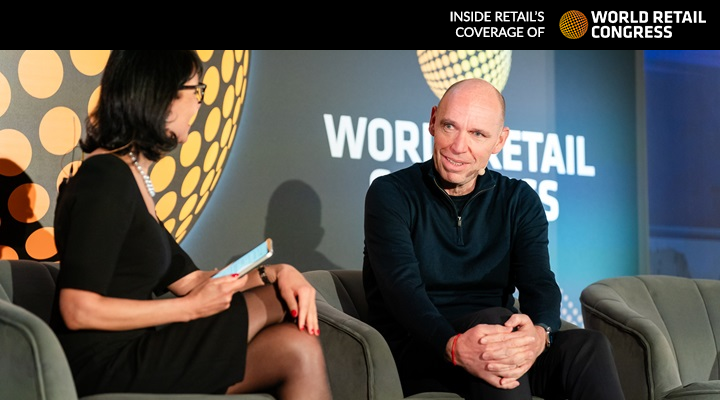Since joining British footwear retailer JD Sports in 2022, chief executive Régis Schultz has laid out an ambitious growth plan to open 350 new stores per year, with a strong focus on North America and Europe.
The retailer recently unveiled a new global flagship on the Avenue des Champs-Élysées in Paris as the city prepares to welcome athletes from around the world for the Olympic Games, but for Schultz, it’s no reason to rest on his laurels.
“The best store is the one coming,” he said in a fireside chat at the World Retail Congress this week.
Finding the right spaces within malls
When it comes to selecting locations for new stores, JD harnesses a mix of hard and soft data.
“We are on-site, we are counting people, we are counting the number of bags,” Schultz said.
“It’s not only [about] choosing the right mall, that’s quite easy nowadays, because all the data is there, but it’s about the right space in the mall. How do we find the floors that will be best for us?”
For him, opening new stores goes hand in hand with his efforts to invest in the JD brand.
“When I joined, we were developing a lot by acquisition,” he noted. “Let’s focus on one thing, let’s stop doing multiple things, and let’s really focus on JD as our first priority. That was the message – and it was more internal than external.”
As the sneaker market becomes increasingly crowded – global revenue is expected to exceed US$80 billion this year – Schultz believes it’s more important than ever for JD Sports to focus on its target customer.
“Usually, retailers get lost because, in reality, we are selling much more than our target customer. So you end up being everything for everyone,” he said. “And I think what JD has done very successfully is really focusing on this young athlete customer and not compromising on that. I’m not trying to be everything for everyone.”
With a reported 35-40 per cent share of the UK sneaker market, JD’s customer base is arguably much broader than its target demographic, but this “young athlete customer” informs what the retailer buys and the way it communicates.
Actions speak louder than words
Like many retail leaders today, Schultz must decide when and how the business weighs in on social issues. Taking a stance on complex topics is not easy, but he is guided by one simple rule: “It’s not about what you say, it’s what you do,” he said.
“It’s not about me saying, ‘I love diversity.’ You go to our stores and you see that we are celebrating diversity. You see that through your eyes. You see that through experience.
“You can talk about a lot of things but the reality is that what you see in your store is the reality of who you are.”
For Schultz, the biggest impact JD can have in this space is through its employment of young people.
“If you look at our staff, we have 90,000 people, of which 75,000 are below 20 years old. We teach them something that no one else gives them, which is a disciplined education. And those people are coming from all different genders and racial origins,” he said.
“What we do every day is give a chance to 16-year-old boys or girls who start in our shop, and five years after, they’re in charge of the store, 10 years after, they’re in charge of the department, and 20 years after they’re our HR director.”
That is a real example, Schultz noted.
The hardest part is replicating this culture across the globe, but Schultz is committed to investing in the retailer’s teams.
“We give them the chance and they give us much more in return.”
Further reading: Sephora CEO Guillaume Motte shares his four ingredients for success






